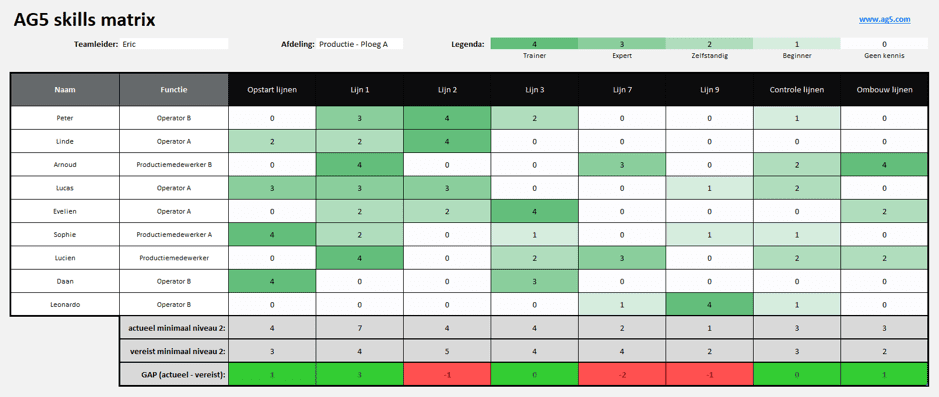Are you a micromanager? Here are some of the symptoms
During this article, we talk about signs of being a micromanager. The article explores symptoms of micromanagement, giving insights to recognize and address this behavior for fostering healthier work dynamics.

It’s a recurrent theme within HR and management circles – micromanagement. What are the foremost traits of a typical micromanager? And what is a micro managing exactly? Find out in this article.
But what is micromanagement?Copied
Micromanagement is a style of leadership in which a manager observes and controls every aspect of their team members’ work. Instead of limiting their involvement to giving a few specific instructions and focusing on the bigger picture, they constantly meddle (sometimes obsessively) with every aspect of a particular operational process. Micromanagers have great difficulty delegating and relinquishing control.
It often arises because the manager in question doesn’t trust their staff. Other times, it’s well-intentioned – an effort aimed at strengthening team spirit and organizational cohesion.
Either way, micromanagement is about a need for control and a focus on details, instead of looking at the bigger picture, for example achieving broader organizational objectives. This is why micromanagement is viewed as a negative leadership style and a sign of a poor manager.
Does micromanagement actually have any benefits?Copied
For sure. In certain situations, micromanagement can be useful and valuable. For example, if you’re working with an inexperienced team that needs a lot of guidance, it can be beneficial for the manager to keep a firm finger on the pulse and provide hands-on assistance. Micromanagement provides an opportunity to guide staff step by step with as few errors as possible, especially if processes or procedures are particularly complex.
What’s more, micromanagement can help smooth the way in situations where strong-willed individuals are prone to clashing within a team or organization. And lastly, micromanagement can sometimes be useful in situations where team members work remotely and individually, as this can help keep everyone involved and on the same page.
And then, there are the disadvantages!Copied
In general, micromanagement has more disadvantages than advantages:
- It signals a lack of trust, which is devastating for morale, motivation, and self-initiative in the workplace.
- It creates an unhealthy dependence – without you, your replacement, team, or organization is helpless, should you be off ill or leave the company.
- It causes excessive work pressure for you personally and in turn chronic stress and even burnout.
- It is impracticable in the long term, especially in larger organizations, because it’s impossible to control and guide everyone within a department in companies with thousands of employees.
- It shifts the focus away from higher-level objectives and broader strategic goals to lower-level, irrelevant details.
- It demotivates staff and ultimately paralyzes them, which is detrimental to performance.
- It slows down productivity because you get in the way of your staff completing tasks on their own.
- It obstructs proper learning because we learn a lot from our mistakes.

So, what are the characteristics of a micromanager?Copied
Do you suspect your manager’s a micromanager? Or are you yourself in a management position and worried you may be or be becoming a micromanager? Read the following characteristics and take a good look in the mirror.
1. Control freak
Micromanagers are obsessive control freaks. Does everything have to land on your desk for final approval? Are you constantly asking staff for updates? Do you expect to be cc’ed on every e-mail within your organization? And do you want to know what every employee is doing and where they are at all times? If so, this obsessive need for control is a sure sign you’re a micromanager.
2. Impatience
Micromanagers generally give their staff too little time to complete their tasks properly. They want results and they want them fast! As soon as they feel something’s taking too long they become impatient, thinking they’d be able to do it faster themselves.
3. Inability to delegate
Micromanagers have real problems delegating. On paper, they might appear to have delegated tasks to co-workers or team members, but not without checking before, during, and after whether everything is being done their way. And worse still, they’re the first to point the finger at others when things go wrong.
4. Exhaustion
There’s nothing wrong with working hard, but micromanagers take on so much personal responsibility and constantly watch over people’s shoulders that they end up with too much on their plates. Often, they experience excessive work pressure and run the risk of exhaustion, chronic fatigue, or even a burnout.
5. High staff turnover
Because micromanagers are so demanding and give their staff so little room to use their own initiative, staff turnover can become a real issue. Most employees seek some degree of autonomy, freedom, and a say in the way they plan and carry out their work.
6. Information overload
Because micromanagers are such control freaks, they often overload their staff with information. Generally speaking, this information relates to the particulars of the task at hand – details staff could work out for themselves.
Tip – visualize your employees’ skillsCopied
If you want to avoid becoming a micromanager or change your ways, it’s worthwhile finding out exactly who can do what and who can’t. This can help you start trusting your staff more. Armed with this information, you can always find the right person for the right job – quickly and easily.
But what’s the best way to collect and depict information about your workforce’s skills? Fortunately, there are numerous tools available for just this purpose.
Skills matrices
First, there’s the skills matrix – a schematic representation of all your staff’s skills, competences, and/or qualifications. List your staff down the left-hand column and their current/required skills along the top row (or vice versa) and enter a proficiency level for each skill and each employee. For example, you can start creating skills matrices using an Excel spreadsheet.
Find out more about skills matrices or download our Excel skills matrix template for free.

Ever considered skills management software?
Chances are that after a while you’ll want to take your skills management system to the next level. AG5’s software allows you to record, save, and manage all your staff’s skills, competences, and qualifications in the cloud.
- Put together your dream team for an upcoming project
- Find the most qualified replacement when a key player is temporarily out of the running
- Identify your high-flyers to help you as a manager
With the right tools, this is a piece of cake and before you know it, you’ll be saying goodbye to that micromanager for good!
Find out how AG5’s skills management software works or schedule a live demo (no strings attached!)

